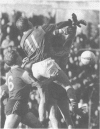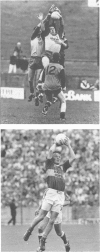Abstract
Match-lay demands of Gaelic football and fitness profiles were assessed at club competitive level. English Gaelic football club championship players (n = 11) were assessed for anthropometry, leg strength and time to exhaustion on a treadmill run. A similar test battery was administered to a reference group of University competitive soccer players (n = 12). Heart rate was recorded during match-play using radio telemetry and blood lactate concentrations were determined at half-time and after full-time. No differences (p > 0.05) were observed between the Gaelic and soccer players in: body mass (70.7 +/- 10.3 vs 76.6 +/- 10.3 kg); height (176 +/- 5.9 vs 177.7 +/- 6.4 cm); leg to trunk ratio (0.53 +/- 0.01 vs 0.54 +/- 0.03); adiposity (12.2 +/- 2.1 vs 13.5 +/- 3.2% body fat); mean somatotype (2.8 - 4.3-2.0 vs 2.4-4.2-2.4); leg strength measures; and performance on the treadmill. The percentage muscle mass values were lower for the Gaelic players compared to the soccer players (41.9 +/- 5.4 vs 47.3 +/- 5.2%; p > 0.005). For the Gaelic and soccer players, respectively, mean heart rate recorded during each half of match-play were (157 +/- 10 and 158 +/- 12 beats/min) and (164 +/- 10 and 157 +/- 11 beats/min), whilst blood lactates measured at the end of each half, were (4.3 +/- 1 and 3.4 +/- 1.6 mmol/l) and (4.4 +/- 1.2 and 4.5 +/- 2.1 mmol/l). Gaelic footballers at English club championship level seem to exhibit similar fitness profiles, and are subject to broadly similar physiological demands as University-level competitive soccer players.
Full text
PDF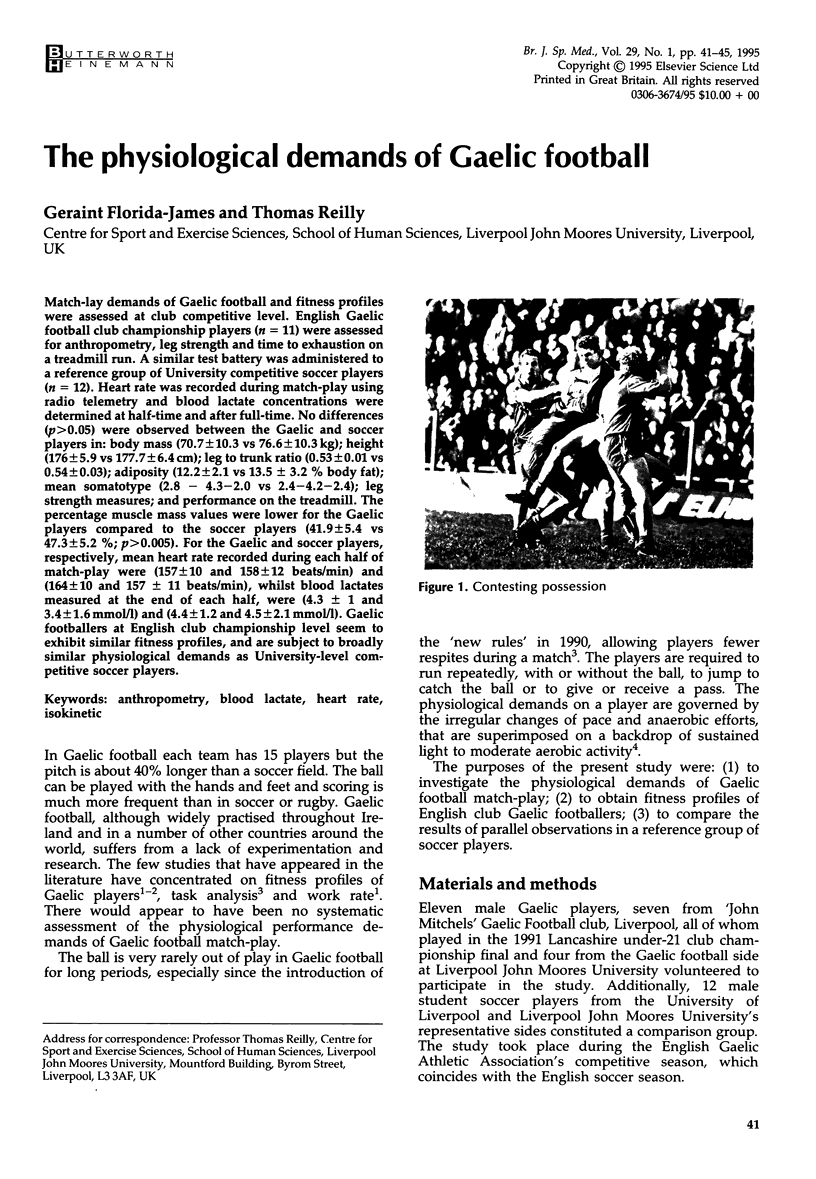
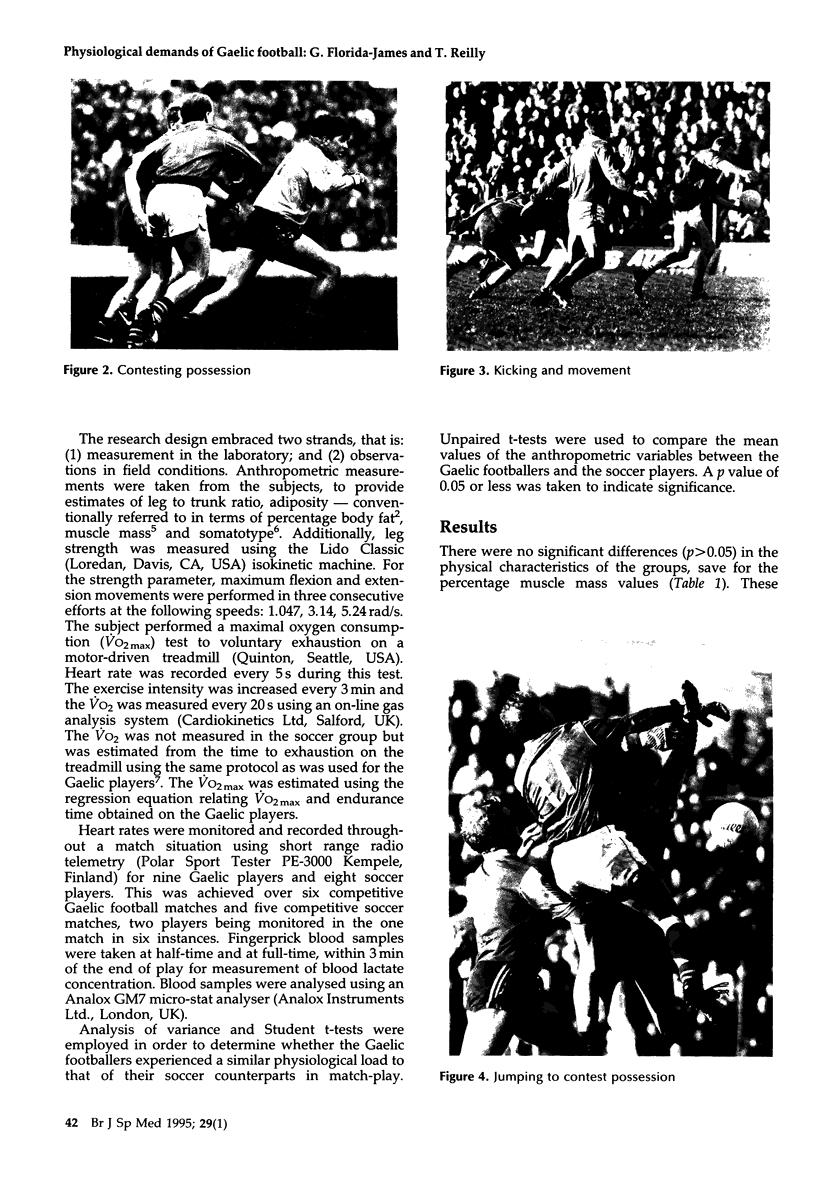
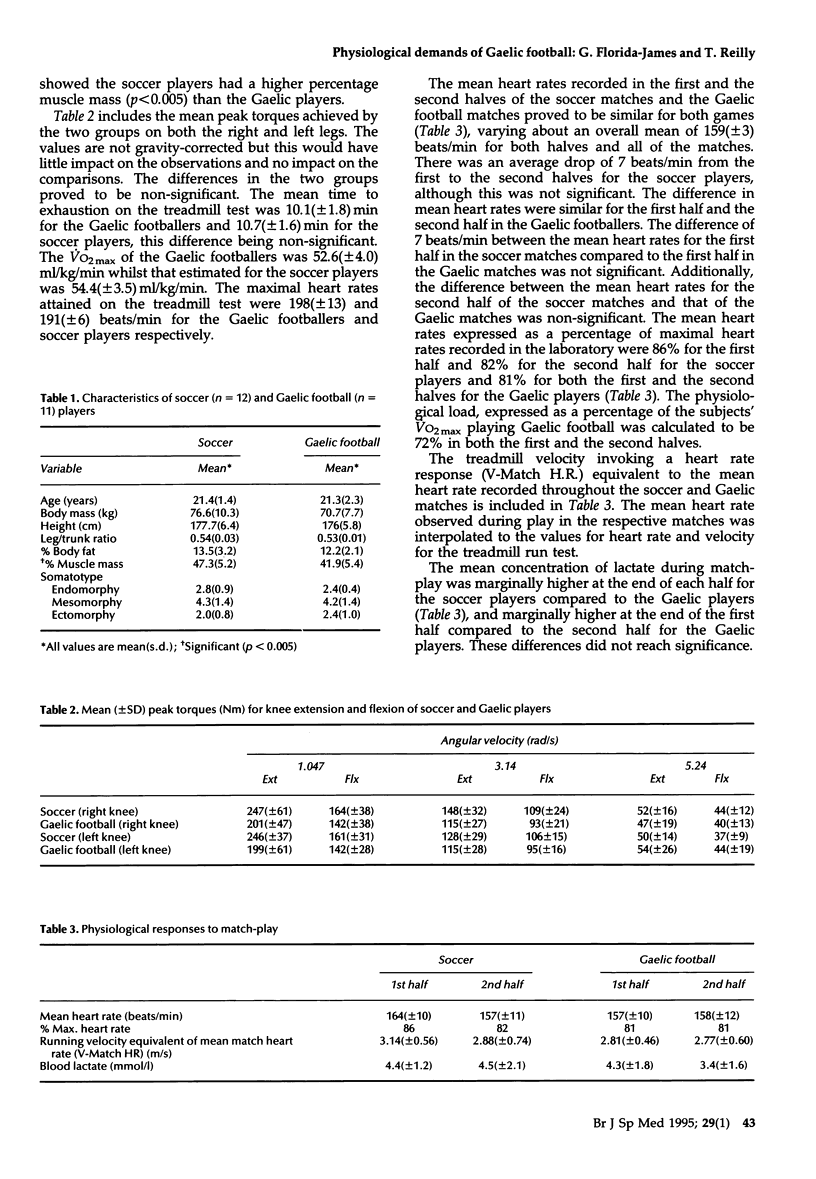
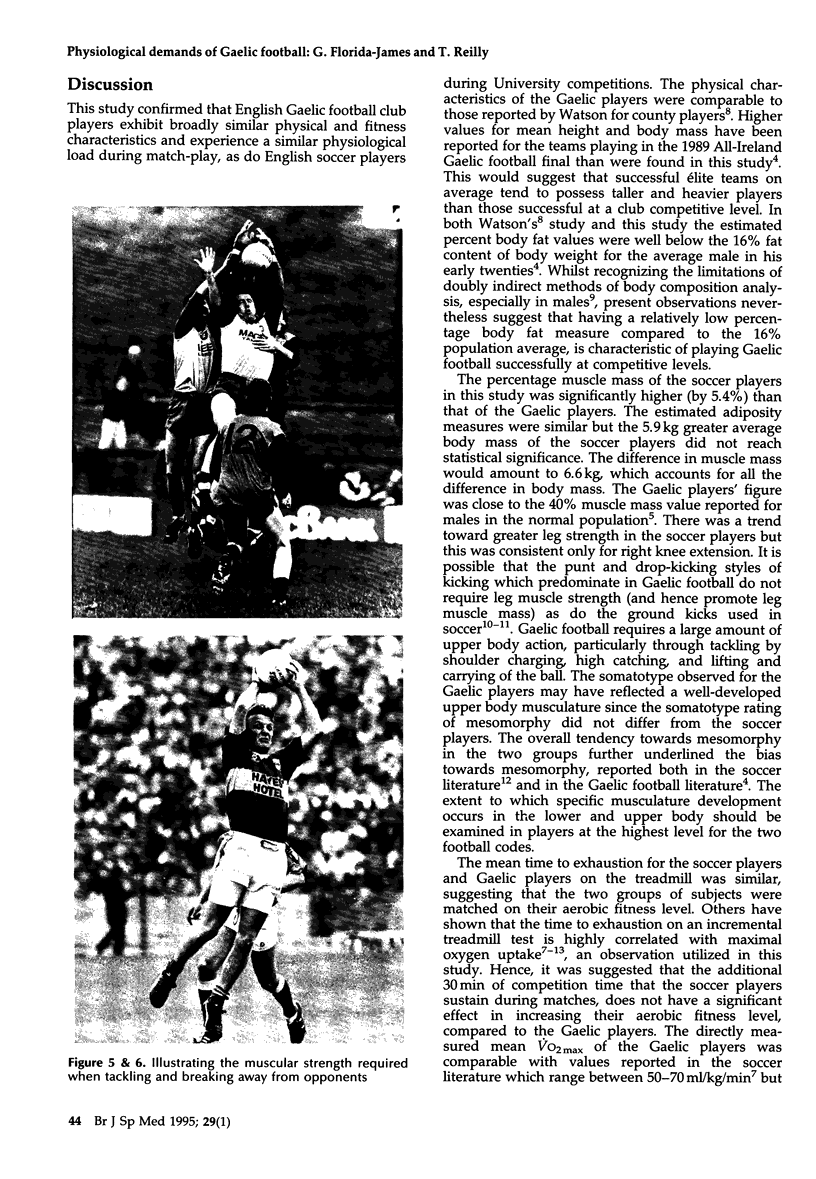
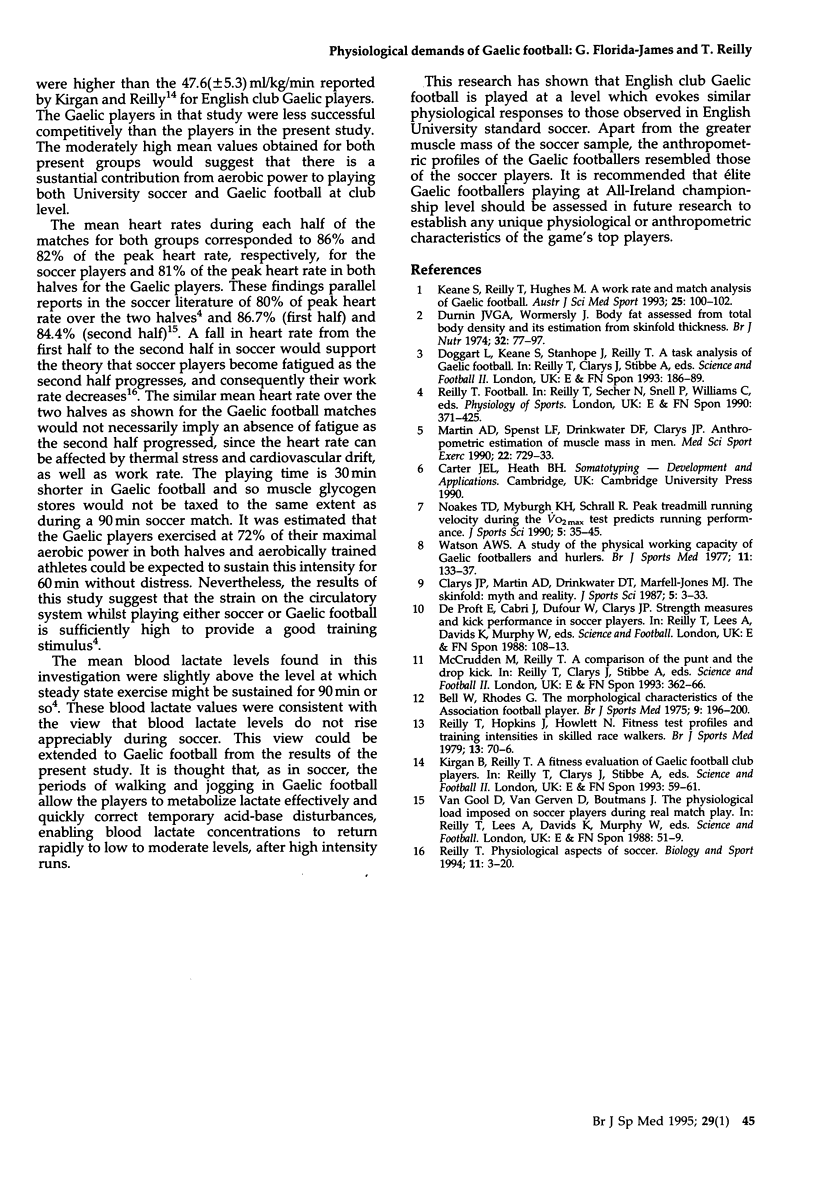
Images in this article
Selected References
These references are in PubMed. This may not be the complete list of references from this article.
- Clarys J. P., Martin A. D., Drinkwater D. T., Marfell-Jones M. J. The skinfold: myth and reality. J Sports Sci. 1987 Spring;5(1):3–33. doi: 10.1080/02640418708729760. [DOI] [PubMed] [Google Scholar]
- Durnin J. V., Womersley J. Body fat assessed from total body density and its estimation from skinfold thickness: measurements on 481 men and women aged from 16 to 72 years. Br J Nutr. 1974 Jul;32(1):77–97. doi: 10.1079/bjn19740060. [DOI] [PubMed] [Google Scholar]
- Martin A. D., Spenst L. F., Drinkwater D. T., Clarys J. P. Anthropometric estimation of muscle mass in men. Med Sci Sports Exerc. 1990 Oct;22(5):729–733. doi: 10.1249/00005768-199010000-00027. [DOI] [PubMed] [Google Scholar]
- Noakes T. D., Myburgh K. H., Schall R. Peak treadmill running velocity during the VO2 max test predicts running performance. J Sports Sci. 1990 Spring;8(1):35–45. doi: 10.1080/02640419008732129. [DOI] [PubMed] [Google Scholar]
- Reilly T., Hopkins J., Howlett N. Fitness test profiles and trainng intensities in skilled race-walkers. Br J Sports Med. 1979 Jun;13(2):70–76. doi: 10.1136/bjsm.13.2.70. [DOI] [PMC free article] [PubMed] [Google Scholar]
- Watson A. W. A study of the physical working capacity of Gaelic footballers and hurlers. Br J Sports Med. 1977 Sep;11(3):133–137. doi: 10.1136/bjsm.11.3.133. [DOI] [PMC free article] [PubMed] [Google Scholar]






